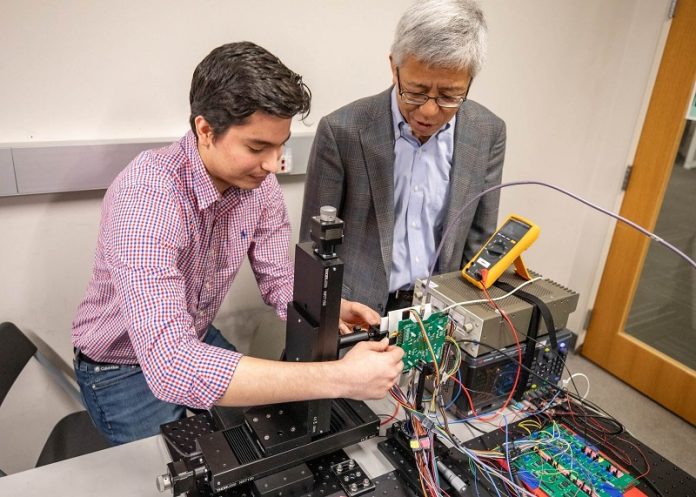
Researchers at The University of Texas at Dallas and Seoul National University have created an amazing new chip that could give your phone the ability to see through objects, just like Superman’s X-ray vision.
This tiny chip can help detect items inside packages or even behind walls, making it useful for many different applications.
The chip could be added to cellphones, enabling them to find studs or wooden beams behind walls, locate wiring, detect cracks in pipes, or show the outlines of contents in envelopes and packages.
It could also have medical uses, helping doctors see inside the body without invasive procedures.
The technology uses signals between 200 and 400 gigahertz instead of harmful X-rays.
These signals are part of the electromagnetic spectrum, which includes microwaves and infrared light that our eyes can’t see but are safe for humans.
The chip emits 300-gigahertz signals, which can penetrate materials and bounce back, creating an image of what’s inside.
The journey to this breakthrough started in 2022 when researchers first demonstrated the imaging technology.
Their recent paper, published in March in IEEE Transactions on Terahertz Science and Technology, details how they made the chip small enough to fit in a mobile device while improving image quality.
Dr. Kenneth K. O, director of the Texas Analog Center of Excellence (TxACE) and the Texas Instruments Distinguished University Chair in the Erik Jonsson School of Engineering and Computer Science, compares this technology to Superman’s X-ray vision.
He explains that instead of harmful X-rays, the chip uses safe signals in the 200-400 gigahertz range.
The research received support from the Texas Instruments (TI) Foundational Technology Research Program on Millimeter Wave and High Frequency Microsystems and the Samsung Global Research Outreach Program.
“It took 15 years of research to improve pixel performance by 100 million times,” said Dr. Brian Ginsburg, director of RF/mmW and high-speed research at TI’s Kilby Labs. He added that this advancement shows the true potential of terahertz (THz) imaging.
With privacy in mind, the researchers designed the chip to work only at close range, about 1 inch from an object.
This ensures that if someone tries to scan the contents of your bag, you would notice because they have to be very close. The next version of the chip aims to capture images up to 5 inches away and will be able to see smaller objects more clearly.
Unlike traditional imaging devices, this chip doesn’t need lenses or optics, making it compact enough to fit in mobile devices.
The pixels on the chip, which detect signals reflected from objects, are tiny—about the size of a grain of sand (0.5 mm square). Dr. Wooyeol Choi, assistant professor at Seoul National University, led the latest research efforts to miniaturize the chip.
Dr. O and his team at UT Dallas have spent nearly two decades developing this technology. Walter Sosa Portillo, an electrical engineering graduate student, joined Dr. O’s lab as an undergraduate after being fascinated by this research. He is now exploring medical applications for the chip, hoping to make even more exciting discoveries.
With this new chip, our phones could soon have superpowers, making everyday tasks easier and opening up new possibilities in medicine and beyond.



